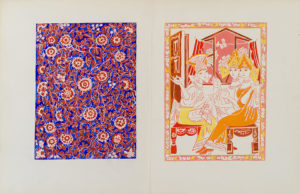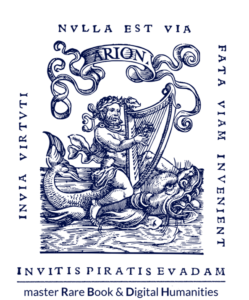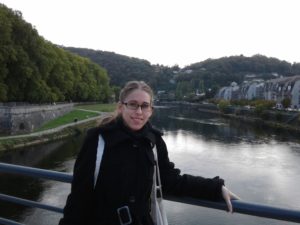
After receiving two BA degrees in Art History from Saint Petersburg State University (Russia)/Bard College (New York) and Sewanee: The University of the South (USA), I am happily settling down in Besançon to study the connection between the livres d’artistes russes émigrés and Russian Medieval and Old Believers illuminations, thanks to the vastness and flexibility of the UBFC’s Rare Books and Digital Humanities program.
More precisely, I would like to focus on Natalia Goncharova’s book illustrations after her emigration to France in the late 1910s. I hope to research the ways in which her book illustrations inherit and reconsider iconography from Russian prayer books and Old Believers’ manuscript imagery.
I am no less interested in tracing the history and geography of the illuminations, preserved by the Old Believers, and of Russian émigrée literature with Goncharova’s illustrations. The former have been comparatively well preserved regardless of the Old Believers’ suppression by the official church, which began as early as the 17th century and was, of course only accelerated by the Soviet regime. At the beginning of the 20th century, Russian avant-garde artists contributed to a revival of interest in the Russian Empire’s vernacular cultures and arts, including those of the Old Believers. A decade later, however, the modernist artists, together with the Old Believers didn’t fit in the new Soviet reality and were forced to leave their homeland.
Due to this enforced diversity of the émigrés’ geography, the task of tracing the Old Believers’ manuscripts and printed books is daunting. Many of these books remain undocumented or have been destroyed; the ones that survived have ended up in Russian and European museums or in the personal collections of Old Believer families, primarily in Siberia and Latin America, where many of them immigrated. Books with Goncharova’s illustrations, in turn, were published in small amounts and eventually dispersed throughout European libraries, museums, and private collections. France has inherited most of Goncharova’s legacy, as well as those of hundreds of other émigrés, which is the reason why I have chosen France as the place where it’s most appropriate to conduct my research.

The digital humanities focus of the UBFC program attracts me in addition to its theoretical and research components. Together with my partner, I am translating a popular Russian novel, narrated by a sassy and egotistic artificial intelligence who has read all the possible texts in Russian and now generates new prose and writes art reviews for its readers in the late 21st century. Bringing the text from Russian to English, I became especially engaged in the author’s contemplations about the future of an artwork or a rare book, about their value as objects in comparison to their digital twins, as well as on the future of museums, auction houses, and rare object collecting in general.
The Rare Books and Digital Humanities program successfully maintains and teaches about the balance between the digital and physical world of artifacts for us to value, explore, and preserve.
I’m extremely grateful for the opportunity to learn more about database management and image processing so that I can not only write a theoretical paper, but also introduce its practical component to the public domain, partially compensating for the mistakes of my fellow citizens in the past. Reincarnated in a new milieu and accompanied by new texts, though digitized and pixelated, Goncharova’s rare-to-find book illustrations in France and the Old Believers’ illuminations have a chance to regain the wider audience’s attention and thus, become much more alive than earlier.




